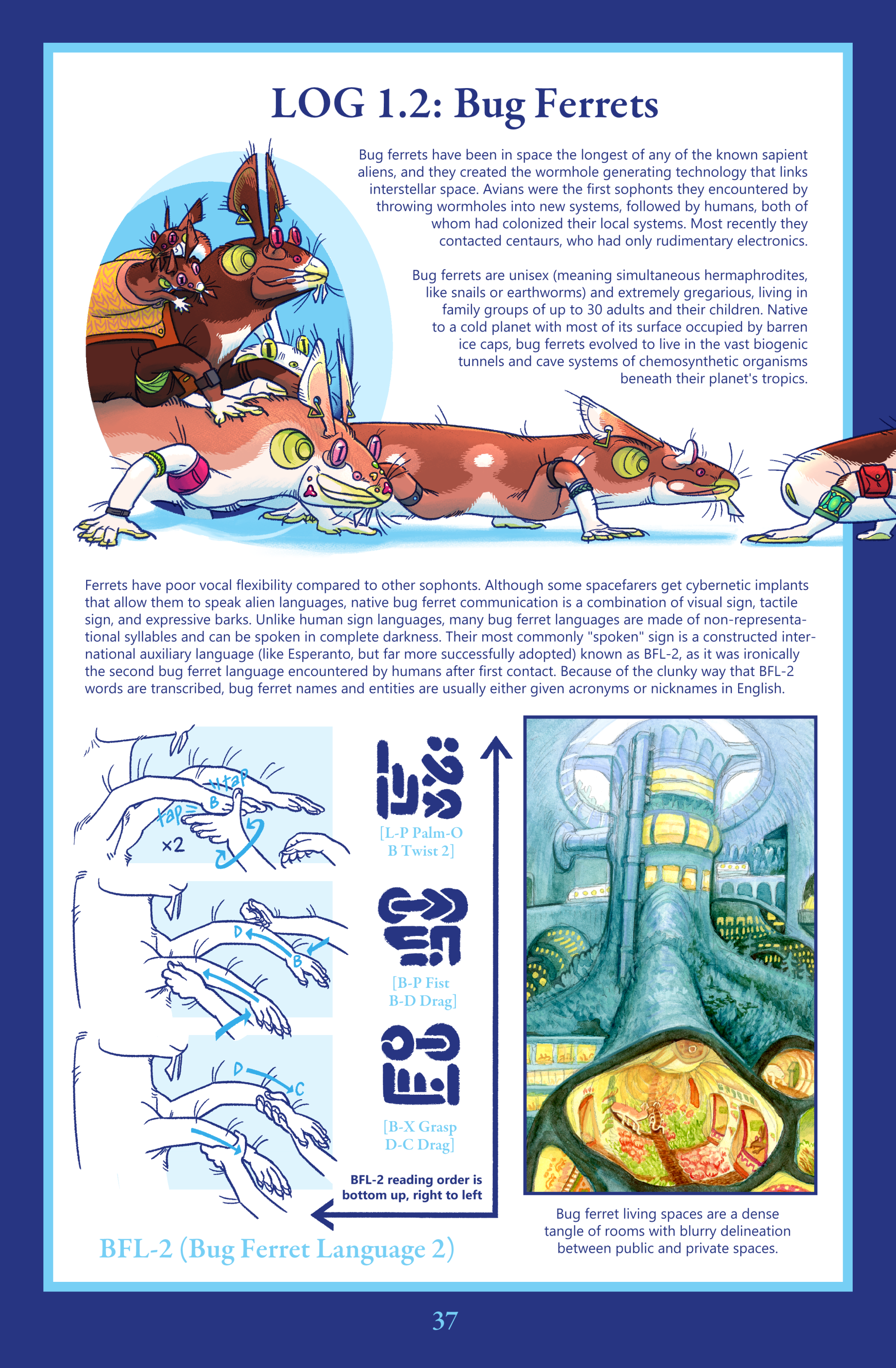All about bug ferrets, and their intense pattycake game of a language. The language stuff is honestly still a work in progress so don't be surprised if all the BFL-2 dialog gets changed later.
Transcript
LOG 1.2: Bug Ferrets
Image: A group of bug ferrets exiting a tunnel. Their fur has a variety of colors from dark brown to reddish pink to white, and their visible unfurred skin is pale green. Most have magenta eyes.
Caption: Bug ferrets have been in space the longest of any of the known sapient aliens, and they created the wormhole generating technology that links interstellar space. Avians were the first sophonts they encountered by throwing wormholes into new systems, followed by humans, both of whom had colonized their local systems. Most recently they contacted centaurs, who had only rudimentary electronics.
Bug ferrets are unisex (meaning simultaneous hermaphrodites, like snails or earthworms) and extremely gregarious, living in family groups of up to 30 adults and their children. Native to a cold planet with most of its surface occupied by barren ice caps, bug ferrets evolved to live in the vast biogenic tunnels and cave systems of chemosynthetic organisms beneath their planet's tropics. Ferrets have poor vocal flexibility compared to other sophonts.
Although some spacefarers get cybernetic implants that allow them to speak alien languages, native bug ferret communication is a combination of visual sign, tactile sign, and expressive barks. Unlike human sign languages, many bug ferret languages are made of non-representational syllables and can be spoken in complete darkness. Their most commonly "spoken" sign is a constructed inter- national auxiliary language (like Esperanto, but far more successfully adopted) known as BFL-2, as it was ironically the second bug ferret language encountered by humans after first contact. Because of the clunky way that BFL-2 words are transcribed, bug ferret names and entities are usually either given acronyms or nicknames in English.
BFL-2 (Bug Ferret Language 2)
BFL-2 reading order is bottom up, right to left. Three symbols are transliterated as:
[B-X Grasp D-C Drag]
Image: The signer grasps their hands around the outside of the receiver's arms and drags them from the second joint to the third joint.
[B-P Fist B-D Drag]
Image: The signer makes their hands loose fists and drags the knuckles on the outside of the receiver's arms from the wrist to the second joint.
[L-P Palm-O B Twist 2]
Image: The signer makes their left hand flat with their fingers together and thumb out, and rotates their wrist twice to flutter it, tapping both sides of the receiver's right wrist.
Image: A large underground space connects to the cold blue light of the surface through a small skylight. Buildings extend down in a column, cut through by transportation corridors, horizontal areas in reach of skylight growing blue-green plants. Under the column, where it spreads out, a cross section shows homey tunnels flooded with warm light from bioluminescent organisms.
Caption: Bug ferret living spaces are a dense tangle of rooms with blurry delineation between public and private spaces.








25 thoughts on “Runaway to the Stars: Page 37”
Amanda/OwlBear
for all it would be terrible for human habitation, I really love Bug ferret architecture
Rose
I’m suddenly delighted by the idea of young bug ferrets playing games that are combination tongue-twister/patty cake.
Ruby
I’d love to babysit baby bug ferrets for like, 15min. Half an hour tops lol. EEF
notanocelot
I have similar thoughts. Ferrets seem like they’d be fun to interact with for like 5 minutes tops before I would just become completely socially exhausted.
Greenjoe
It occurred to me that the ‘exoskeleton’ that bug ferrets have would be a bit of a complication for any surgery that needs to be performed on internal organs, though with the advanced tech they have, I imagine they do have specialized tools for managing with that.
Ruby
This reminds me of a little presentation made by a veterinarian surgeon that I attended in which he explained how he along with some colleagues developed a technique to do surgery on sea turtles without having to cut their shells open. Mostly intended to remove fishhooks and other debris that could be clogging their digestive tract, but with many other applications of course.
Liza
They have matching earrings! Is that significant of anything or are green triangles just really popular?
SJ
They’re probably to signify they’re all members of the same family/household, as mentioned in the “clothing” section of the ferret culture page: https://jayeaton.site/RunawayToTheStars/Sophonts/BugFerrets/Culture
Liza
Ah yeah. I think I read that once, and forgot.
Gonzogonz
Gosh i love their design, such a funky shape and face. How would they respond to a human petting/wanting to pet them? Would it be like talking complete gibberish? Would they recognize it as a sign of affection? would it be considered rude/awkward/weird/embarrassing?
Greenjoe
That brown one just riding on the back of the pinkish one, is that something common in bug ferret society?
Jay Eaton
They’re crawling over the other one. Totally socially acceptable in a tight spot, especially if you’re family.
feesh
bug ferrets!!!! fyi there’s a line in the transcript that describes one of the ferrets as “dark brownie”, which is very cute, but may be a typo?
Jay Eaton
Oops, fixed
Zuorai
Will you ever film or animate a tutorial on how to sign in BFL-2?
Jay Eaton
Mmmmmmmmmmaybe.
whirly
your work on linguistics is sooo cool. i wish your aliens were real so i could take a class on this stuff… i want to talk to alien xD
Bug ferret fan
I love the bug ferrets so much
badoingus
Touch-averse autist here.
Kind of occurs to me that if we had bug ferrets in real life, I would absolutely hate having to deal with them.
Jay Eaton
Oh yeah, if you don’t like being touched, interacting with bug ferrets in person would be hell
Redacted
Kinda makes me wonder how ferrets would react to being explicitly told not to touch somebody.
Jay Eaton
Depends on individuals but most would attempt to avoid touching said person, but periodically forget and absentmindedly touch them. They may also feel extremely awkward about avoiding touch when it clashes with their ingrained social rules of politeness. Many would feel like they’re being rude or treating you like you’re contagious.
Storel
Hmm, so if you dress like someone who’s contagious (whatever that would look like to bug ferrets), would that make them feel better about not touching you?
Doubloon
Tubular dudes love their jewelry.
Amanda/OwlBear
Bug Ferret architecture is so cool, I’ve seen other art over the years and I love all that noodly matrix of tunnels